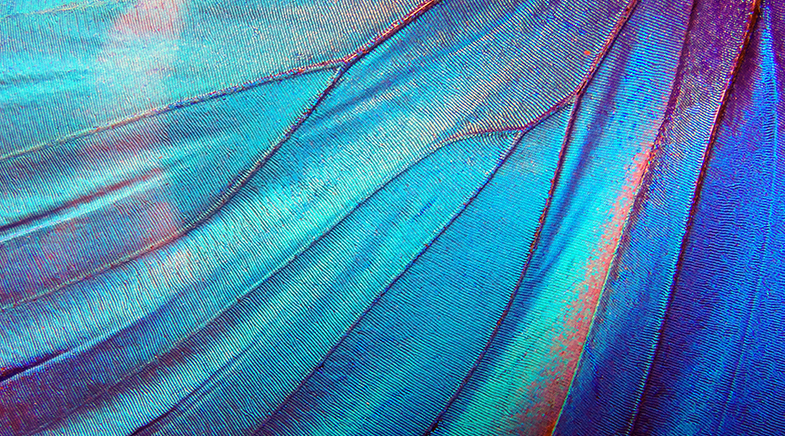Waking up to sleep
-
- from Shaastra :: vol 03 issue 02 :: Mar 2024

The story of sleep science, as narrated through the lives of four pioneers who contributed immensely to the field.
This is not a book about sleep. This is the story of the early pioneers of sleep science by journalist Kenneth Miller. Two of them – Nathaniel Kleitman (the "father of sleep research") and William Dement (the "father of sleep medicine") – are drawn out in some detail, while the stories of Eugene Aserinsky (the discoverer of REM sleep) and Mary Carskadon (who publicised the epidemic of sleep deprivation among teenagers) fill out the scientific lineage that began with Kleitman.
Sleep science may trace its origins to the 19th century, but it did not make significant progress until the mid-20th century. The quotidian familiarity of sleep prevented "serious" scientists from considering it a subject worthy of scrutiny. There was also the anthropomorphic view: sleep was seen as a pause in activity, a state of "suspended animation".
Sleep scientists did not have clinical monitoring tools of the kind intensive care units are replete with these days. They had to gather data by staying awake to observe their sleeping experimental subjects. Even the hardiest scientist quickly tired of this. When Kleitman took up the study of sleep for his doctoral degree, there were fewer than a dozen scientists studying sleep.

Miller devotes a full chapter (titled 'Exodus') detailing Kleitman's early life as a Jewish emigre fleeing the pogroms in Europe. Kleitman stopped over in Lebanon in an abortive attempt to train as a medical doctor before fleeing Ottoman persecution to the U.S.
The U.S. was open to Jews, but covert discrimination was rife. After some hard knocks, Kleitman, through sheer brilliance and hard work, landed a studentship at the University of Chicago. His choice of sleep as his dissertation topic may have been constrained by the discrimination faced by Jews.
In earlier days, sleep scientists did not have clinical monitoring tools; they had to gather data by staying awake to observe their sleeping experimental subjects.
A mix of observations made by researchers studying sleep seeded Kleitman's initial work: sleep occurred in lighter and deeper phases; when cerebrospinal fluid from sleepy animals was transfused into alert animals, it made the recipients sleepy – which gave hints of a sleep-inducing substance; an epidemic form of encephalitis that raged across Europe and North America between 1916 and 1927 caused localised lesions in the brain, leaving its sufferers sleepy, suggesting that discrete regions of the brain may control sleep. And then there was the long shadow cast on sleep research by two eminent scientists of the time – Ivan Pavlov and Sigmund Freud. Pavlov proposed that sleep was a response to overstimulation (that is, sleep provided an escape from the stress of excessive stimulation occurring during the day). Freud postulated a role for dreams as an expression of repressed desires. With so many ideas to chase, the tendency for researchers was to behave like a kid in a candy shop, browsing one idea after another.
CHALLENGES APLENTY
The absence of experimental tools was an additional challenge for those wishing to study sleep. The failure to recognise that all animals sleep, and the absence of simple animal models of sleep, meant that there was no possibility of using the powerful tools of genetics, biochemistry and pharmacology to study the inner workings of sleep. Clinical studies were limited by their observational nature. The breakthrough happened with the discovery of the electroencephalogram (EEG) by the psychiatrist Hans Berger. In the hands of Kleitman's student Aserinsky, the EEG became the tool used to discover REM sleep.
Aserinsky had not finished schooling but managed to obtain admission to the doctoral programme on the strength of his performance in the entrance test. Kleitman was the only adviser available: his interest in sleep had no takers among the students. Aserinsky is quoted as saying "a major criterion for the selection (to the Kleitman lab) was that the candidate have a heartbeat."
With research funding from a meat-packing company, Aserinsky embarked on a study of the sleep habits of infants (the company wanted to know if protein intake helped infants sleep better). Kleitman wanted Aserinsky to study eye blinking at the onset of sleep. This proved to be a dead-end, and Aserinsky proposed studying eye movements in adults when they slept. And he added an important twist: he would record the EEG while his subjects slept. He rejigged an obsolete, mothballed recording machine to record the EEG and the movements of the eyeball in sleeping subjects (including, at one point, his own eight-year-old son). The 'aha' moment came soon, when Aserinsky noticed that when the eye movements were the greatest, the EEG waves in sleeping subjects resembled those seen when they were awake. After briefly considering calling these eye movements "jerky eye movements", Aserinsky settled on the more acceptable term "rapid eye movement sleep" or REM sleep. Kleitman, enthused by this finding, recruited Dement, then a second-year medical student, to assist Aserinsky in his research.
STRIKING IMPACT
The discovery of REM sleep impacted sleep research in a much more significant way than anticipated. Once the REM recorder was combined with recorders that measured other physical parameters, it was no longer necessary for sleep researchers to stay awake during the experiment. Recording tape collected overnight could be studied and analysed the next morning. Sleep research took off. The discoverer of REM sleep should have become a star in the field. Unfortunately, Aserinsky lacked the 'people skills' needed to develop as an independent researcher. His place was taken by Dement, Kleitman's "star pupil", who went on to bestride the field like a colossus over the next few decades.
Until Dement arrived on the scene, the science of sleep remained somewhat cloudy with every new finding seemingly repudiating what went before – a typical situation in a fledgling science where the core principles are still being laid. Dement's early work on REM sleep gave ambiguous and contradictory results. But he recognised the importance of REM as a distinct state of sleep that needed study and explanation, and he persisted, eventually creating the clinical specialty of Sleep Medicine as a way to help patients with sleep problems.

Miller tells the story of sleep science through four pioneers. It covers their foibles and their intellectual vigour in equal measure and humanises the pursuit of science in a manner that a dry scientific paper cannot. Miller notes that the "drivenness" of three of these pioneers may have had something to do with their "father issues" (Kleitman's was dead, and two others – Aserinsky and Dement – had fathers who were barely present in their lives). "That dad-shaped bruise may have been… the wound they sought to heal by earning recognition and acclaim," writes Miller. The early chapters where he recounts the scramble for funding and the improvisations (or jugaad, as we might call it) in the laboratory lend the story a folksy charm.
William Dement recognised the importance of REM as a distinct state of sleep that needed study. He created the field of Sleep Medicine to help patients with sleep problems.
Large swathes of sleep science are left out. This may be a fault in a book on sleep science, which this is not. This is a book about a few chosen pioneers, the lives they led and the work they did. The coverage of the details of their personal lives lends human interest although, at times, it borders on journalistic voyeurism.
What comes through strongly is the relentless pursuit of knowledge in the face of disappointments, personal tragedy and physical hardship. Although it harks back to an age when the scientific ecosystem was very different, there are still useful lessons that can be learnt. Even in today's era of Big Science, hard work, dogged persistence and the ability to work well with others are traits that are necessary for scientists to succeed.
A clinical pharmacologist and neuroscientist, Dr Swami Subramaniam is CEO of Ignite Life Science Foundation.
See also:
Have a
story idea?
Tell us.
Do you have a recent research paper or an idea for a science/technology-themed article that you'd like to tell us about?
GET IN TOUCH














